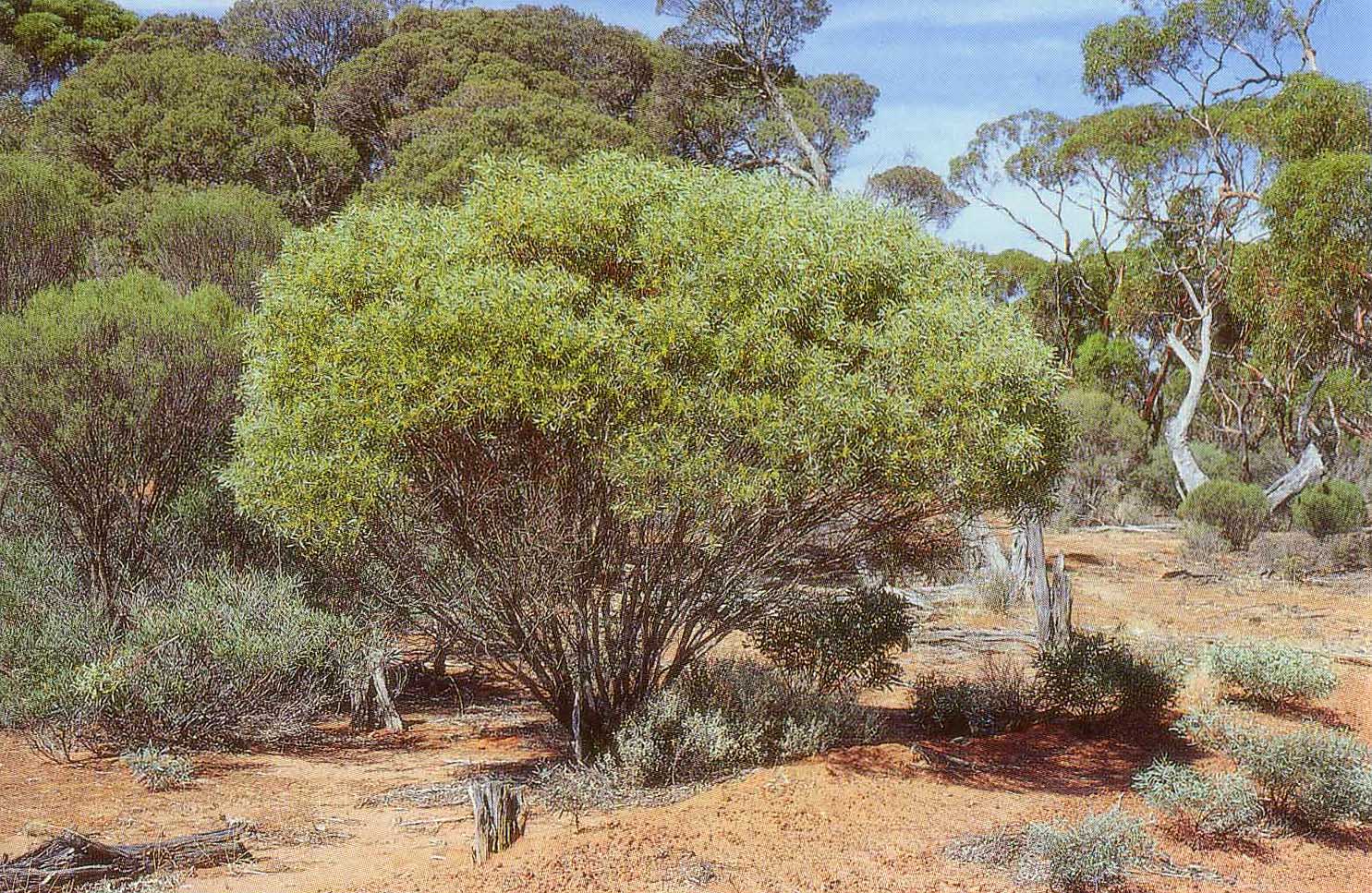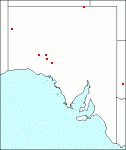Family: Fabaceae
Acacia jennerae

Citation:
J. H. Maiden in Ewart & Davis, F1.North. Terr. 333 (1917).
Derivation: The name commemorates Miss A.M. Jenner one time librarian at the Botanic Garden, Sydney.
Synonymy: Not Applicable Common name: Coonavittra wattle
Description:
A shrub 2-3 m high. Branchlets slightl yangular, glabrous, usually markedly reddish-brown.
Phyllodes 5-15 cm long, 0.7-1.6 cm wide, elliptic, straight or slightly curved, glabrous, sometimes pruinose, mid-vein prominent often eccentric, lateral veins evident and at an acute angle, base narrowly cuneate, apex acute to acuminate. Gland on upper edge just above pulvinus.
Inflorescences of axillary racemes mostly shorter than the phyllode, rarely reduced to a single peduncle. Peduncles 2-6 mm long. Flower-heads globular 20-30-flowered, 5-6mm diameter, golden yellow.
Legumes to 15 cm long, 5-8 mm wide more or less linear, raised over the seeds and constricted between them, reddish-brown. Seeds not seen, apparently longitudinal.
|
|
Distribution:
|
A sparse and scattered distribution in northern South Australia with single collections from the Serpentine Lakes, Simpson Desert, and west of Mt Finke. It has been found on red sandy flats.
S.Aust.: NW, LE, NU, GT.
|
Flowering time: No flowering material yet collected in South Australia but in adjacent W.Aust. and N.T. flowering between March and August.
|

SA Distribution Map based
on current data relating to
specimens held in the
State Herbarium of South Australia
|
Biology:
No text
Related taxa:
Related to A. murrayana which has broader legumes and narrower leaves and more distantly to A. leiophylla and A. pycnantha both of which are southern in distribution.
Taxonomic notes:
Acacia jennerae is discussed by Tindale (1980). Its distribution in W.Aust., N.T. & N.S.W. is discussed but at that time it had not been recognised in S.Aust., an illustration is provided.
Cultivation:
The showy flowers should make this an attractive species for dryland planting but it does not appear to be in cultivation.
Author:
Not yet available
Source:

|

